Harley-Davidson Nightster Review
Review by Wayne Vickers
So Harley have reintroduced the Nightster. Those with limited historical knowledge of the Milwaukee line-up won’t know that the Nightster was once a thing. Then for a time it wasn’t. Now it is again. Other things happened there too but you’re pretty much officially caught up.
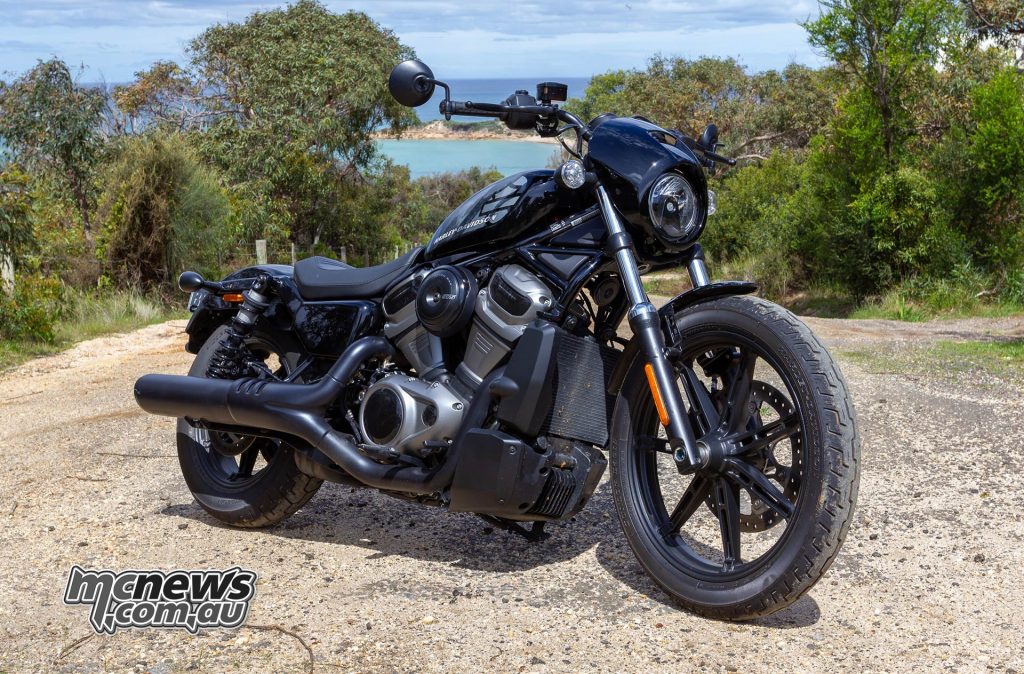
It’s kind of a big deal for Harley in that it represents another of the ‘new’ Harleys in the line-up as they continue in their quest to attract new (and younger) customers to the brand. In essence it is the latest chapter of the Sportster family – a line that stretches back some 65 years. It represents the entry model to the range.
Think of it as the little brother to the Sportster S if you will. We tested that a few months back and while I quite liked some elements of the Sportster S, it wasn’t without some shortcomings. Suspension and brakes needed some work, but there was enough to like once you’d spent some time on it. Fast forward to now and I’ve had a chance to try and find out how the Nightster stacks up.
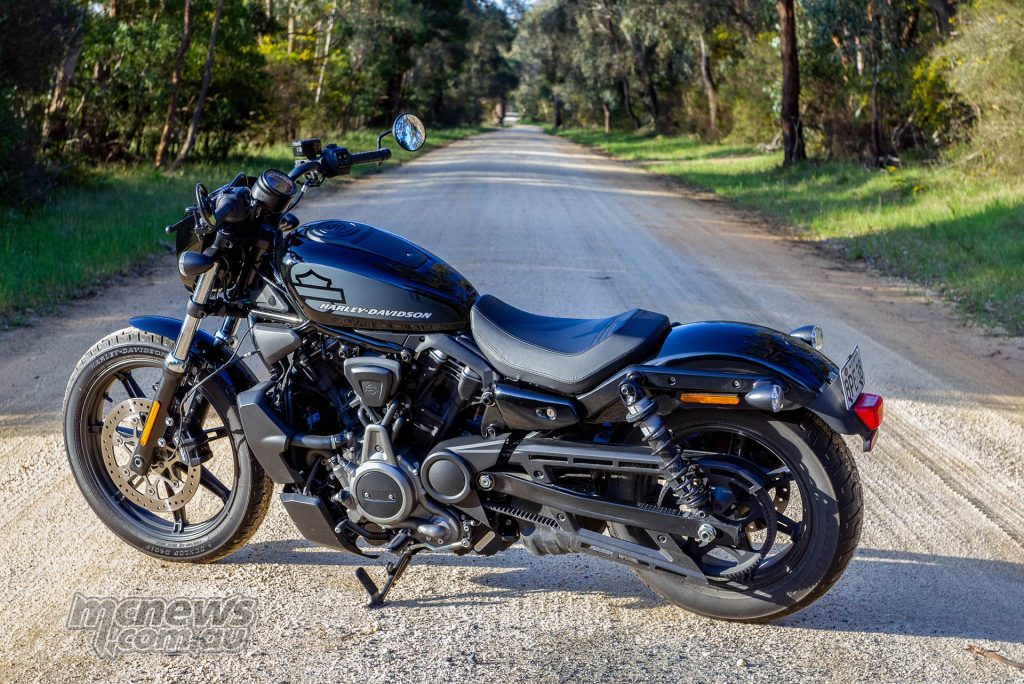
Let’s first expand on what I mean when I say little brother to the Sportster S. Its smaller, lighter, more agile and has better handling than big bro and as such some of the more obvious differences are worth calling out:
- It tips the scales at a relatively svelte (for a Harley) 220 kg which is down nearly 10 kg on the Sportster S.
- It runs notably narrower and more sensible tyres for better change of direction and cornering. 100/90 on the front and 150/80 on the rear.
- It uses a 975 cc version of the new Revolution Max engine, punting out 67 kW (just on 90 hp) at 7500 rpm, peak torque arrives at 5000 rpm. So its a revver. Like the Sportster S, the Nightster uses the engine as a stressed member in the chassis.
- It also employs twin shocks on the rear instead of the Sportster S monoshock, though in this iteration that suspension has no linkage.
- Other highlights include a petrol tank that’s actually under the seat for mass centralisation – what looks like a traditional tank is essentially an air box cover.
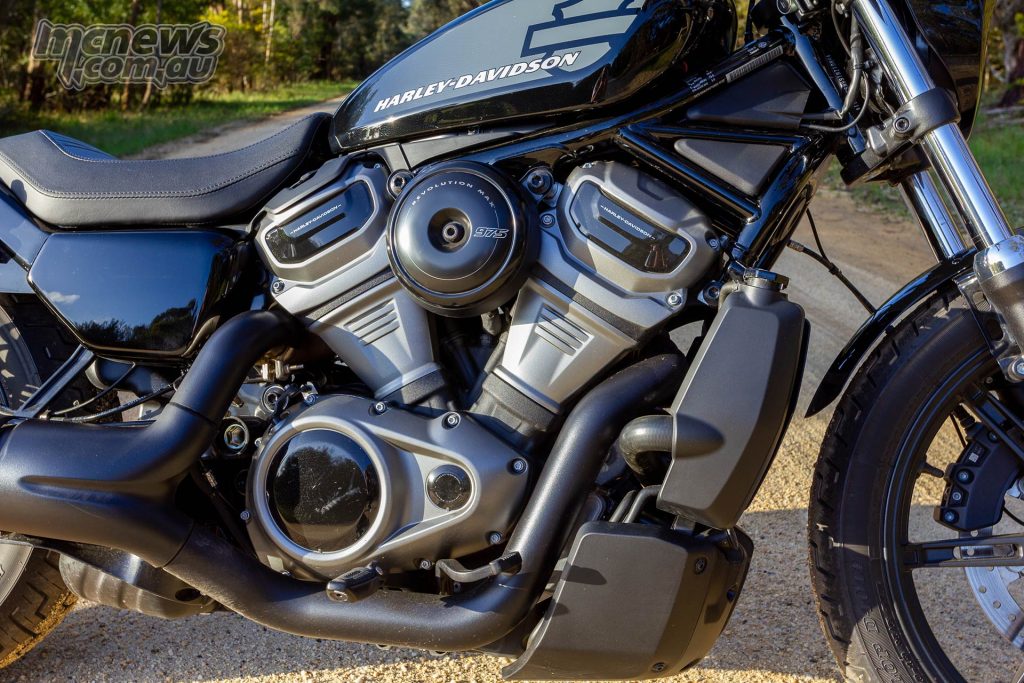
So does the Nightster deliver? Well yes. Aaannd No. Confused? Me too at first. Because while it ticks most of the boxes on the brief, I’m still not totally convinced that it’s going to attract a lot of new blood to the brand. Yes it’s lighter and it definitely steers better. As a bike it’s ok, and I think will appeal to a lot of buyers already ‘on board’ and liking the brand, but like the Sportster S it has some shortcomings.
Now this incarnation of the engine is quite a nice thing. As is the bigger 1250 in the Sportster S tune which puts out an extra 30 hp and the full fruit 150 hp version of that 1250 in the Pan Am for that matter. The 975’s character as I mentioned earlier is that it really does like to rev. Bottom end is fine, but really once you get to around three, three and a half thousand rpm the bike is well into its comfort zone.
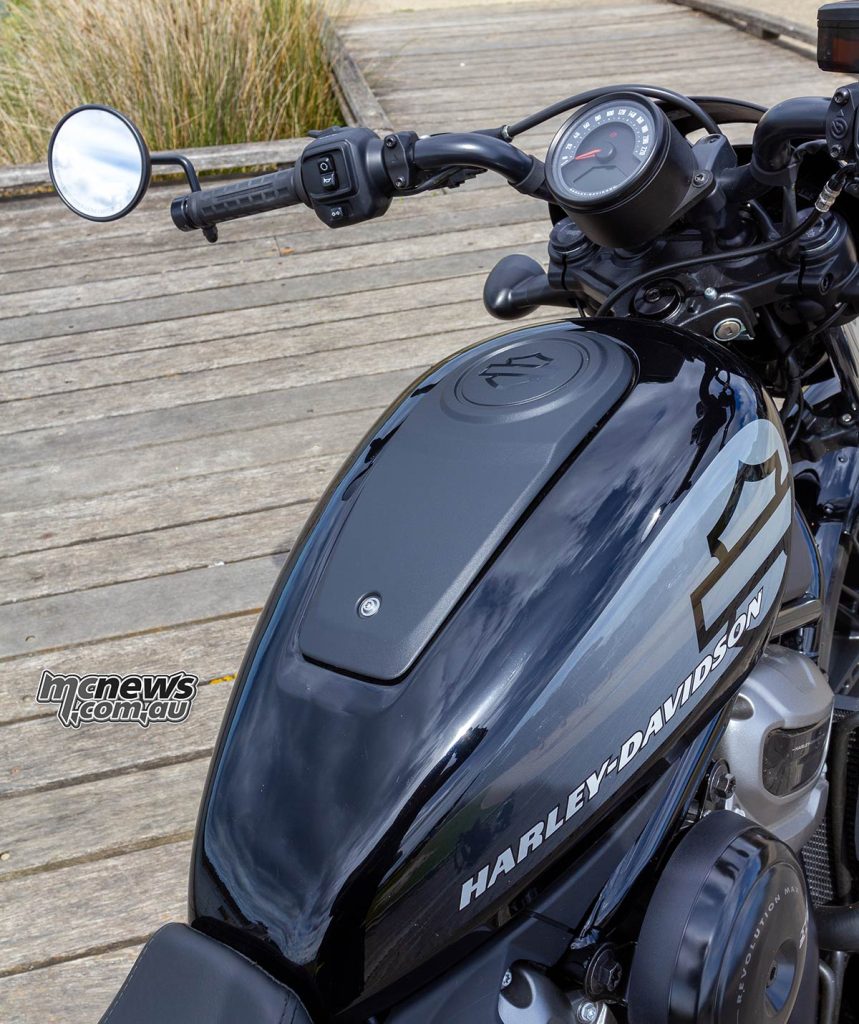
The idea of throwing what is a relatively high revving engine into a cruiser takes some wrapping your head around. Is that what folks will want? Harley obviously seem to think so and after spending some saddle time on it, the Nightster certainly started growing on me.
The throttle is super soft and long throw so dead easy to control. The road map is spectacularly gentle, the sports map steps it up being more responsive – though at times, Sport was a little too abrupt and at odds with the rest of the bike. It was ok out on the open road but a little too snatchy for my liking at low speeds around town, I admit that I’m pretty picky about fuelling though.
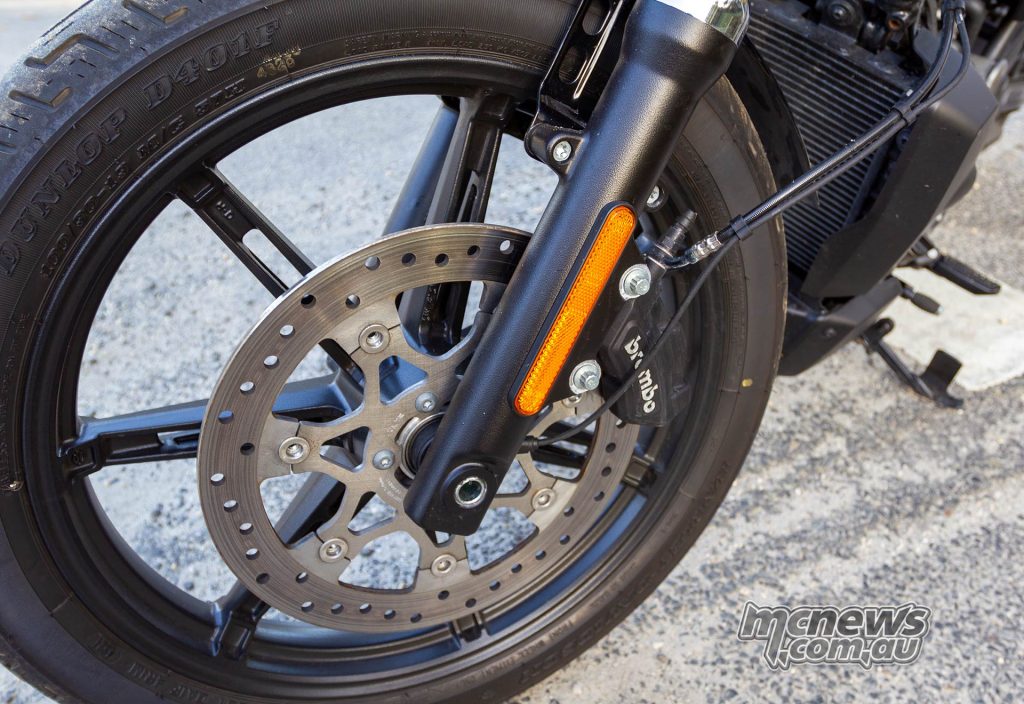
The main disappointment with the new range of engines is the pedestrian exhaust note. It’s very un-Harley. That would be the firing order changing from the old potato-potato note to a typical V-Twin note. In factory state with that huge stove pipe black muffler is not exactly the most inspiring note. I’ve probably had farts that had more authority if I’m honest. It certainly doesn’t help give the bike a lot of character, or a premium feel.
That signature sound is a big part of the appeal of American iron in the first place. Sound as a whole is a big part of the whole experience for a lot of riders – which is also the reason I struggle to be excited about modern F1. But that’s a whole ‘nother can of worms to unpack. Best not to go there or I might end up outside shouting at clouds. I think Harley are assuming, or even encouraging most riders to promptly throw that muffler in the bin and put something more liberating on…
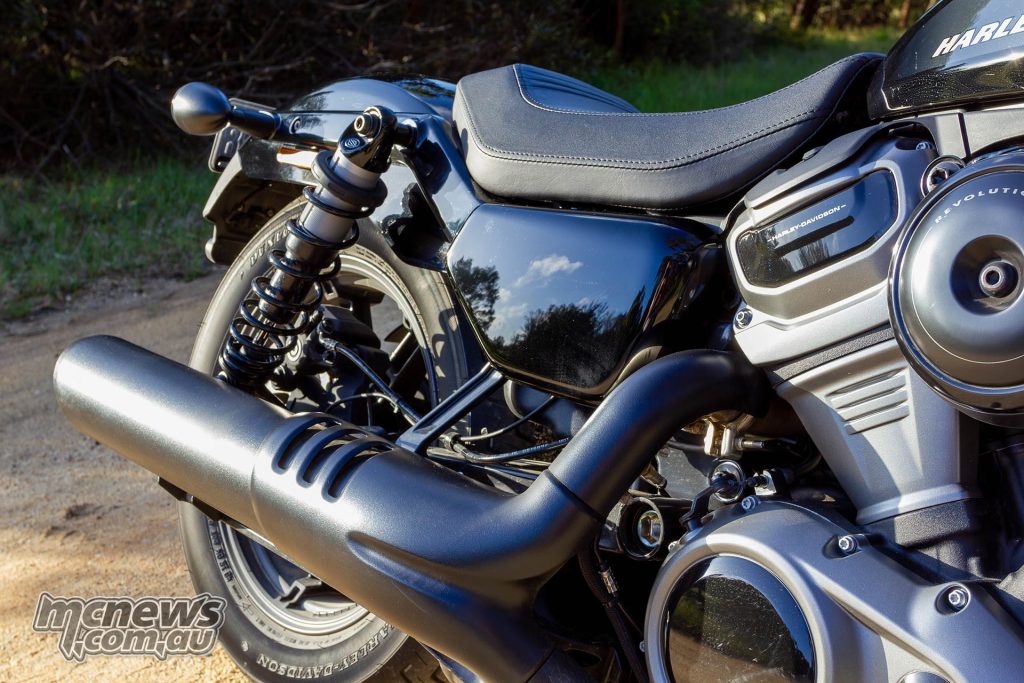
There’s no denying that it is much, much easier to ride than the Sportster S. The foot peg position is far more traditional, and steering input is noticeably reduced. So for those who want something a little more nimble, with decent manners and cornering ability it could be just the ticket.
The Nightster definitely does feel better on corner entry and has more cornering ground clearance. Harley refer to it as more Sporty, but let’s be clear that that’s in comparison to cruisers in general. Not sportsbikes as such… You’re not going to be dragging the elbow around the outside of an R1 any time soon. Unless that’s closely followed by a ride in an ambo.
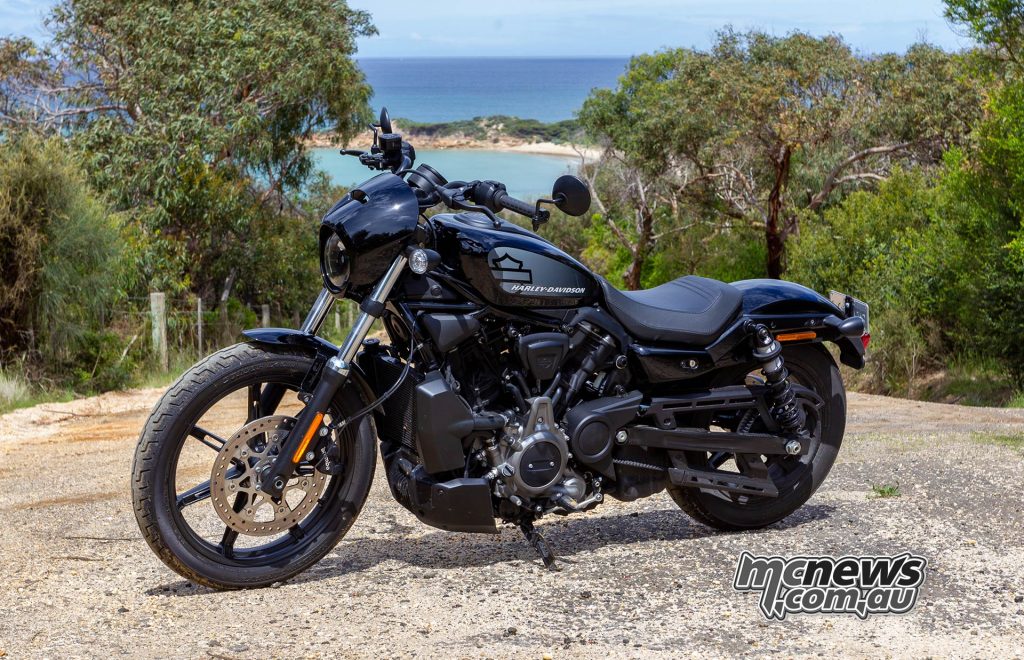
The gearbox is ok. I had a few missed shifts, but it’s mostly pretty good. Smooth action and a nice feel in general. I ended up using the clutch a lot of the time but that was no issue as the clutch action is nice and light.
Beyond that, the thing I struggled with initially was the ergos. More specifically the seat shape and relationship with the bars. Now I’m not exactly a short stack. I frustratingly never quite made 6 foot but I’m only a bee’s dick short. And yet, on the Nightster, I felt like the reach to the bars was too wide and too far for me to be completely comfortable.
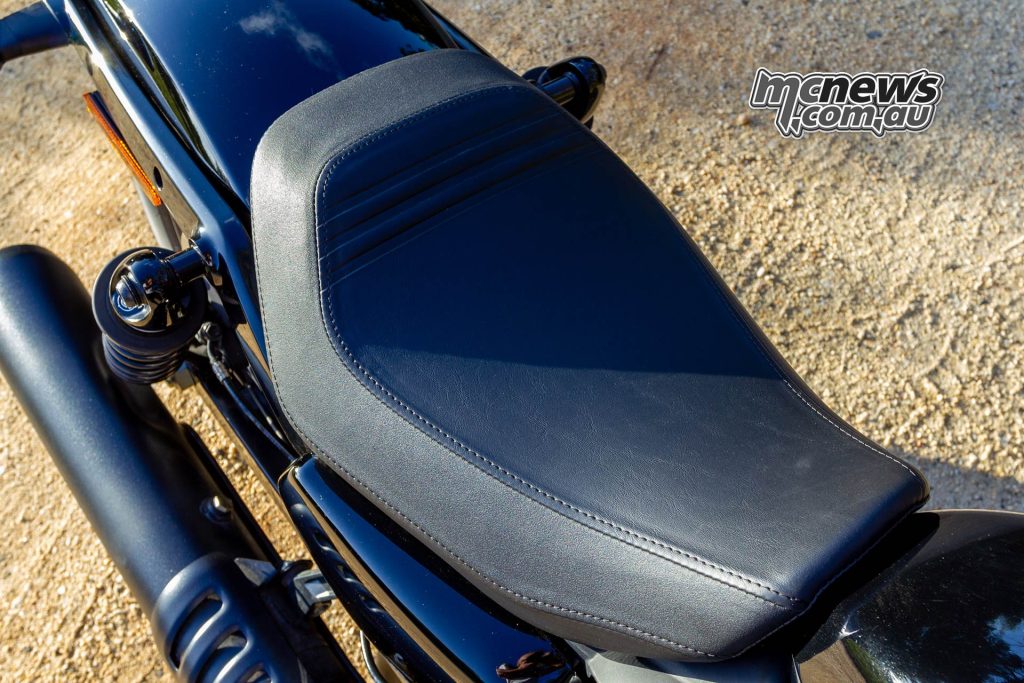
Turns out the issue was me. Specifically I was expecting to be able to ride it with a relatively upright position. Sitting upright had me hanging ‘on’ with my hands instead of steering and controlling the bike which I didn’t like at all. The seat shape only served to slide my butt back further and exacerbated the problem.
Once I got my head around the fact that you really do need to lean forwards and into the bars more than you might think, it became a much better thing. And it could be that I’m just a slow learner (possibly…) but again… it might not be the ideal first impression for test rides. Oh, those wide bars with mirrors on the end? Good luck lane filtering with those puppies. #texaslonghorns
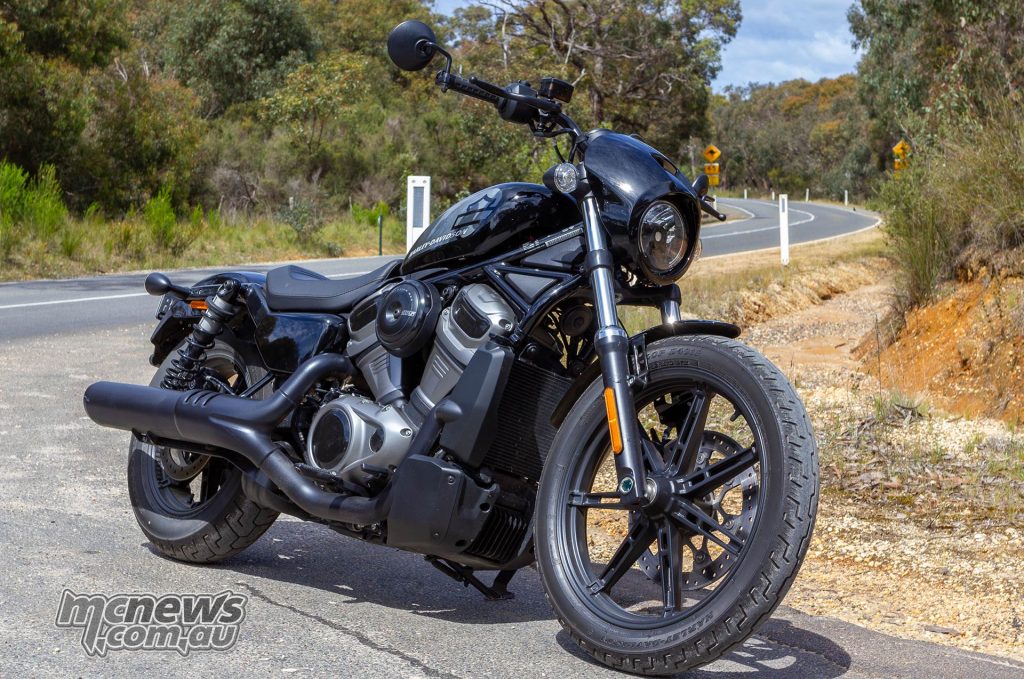
The suspension and handling though is a definite step up from the Sportster, particularly the rear twin shock step. While still not into the ‘excellent’ category by any means, it’s better than ok. That front is pretty decent and was well setup for my weight too (at 85 kegs plus gear) which is lucky as it’s not adjustable. Overall the ride and dynamics themselves are pretty decent, no doubt the low, central fuel tank location helps there too.
But bear in mind that limited travel bikes can’t hope to cope with big bumps and potholes of our sub optimal roads. There’s a comfort price to pay for the scootchy low ride position. Again, for those unaware, these things just don’t like serious bumps or potholes.
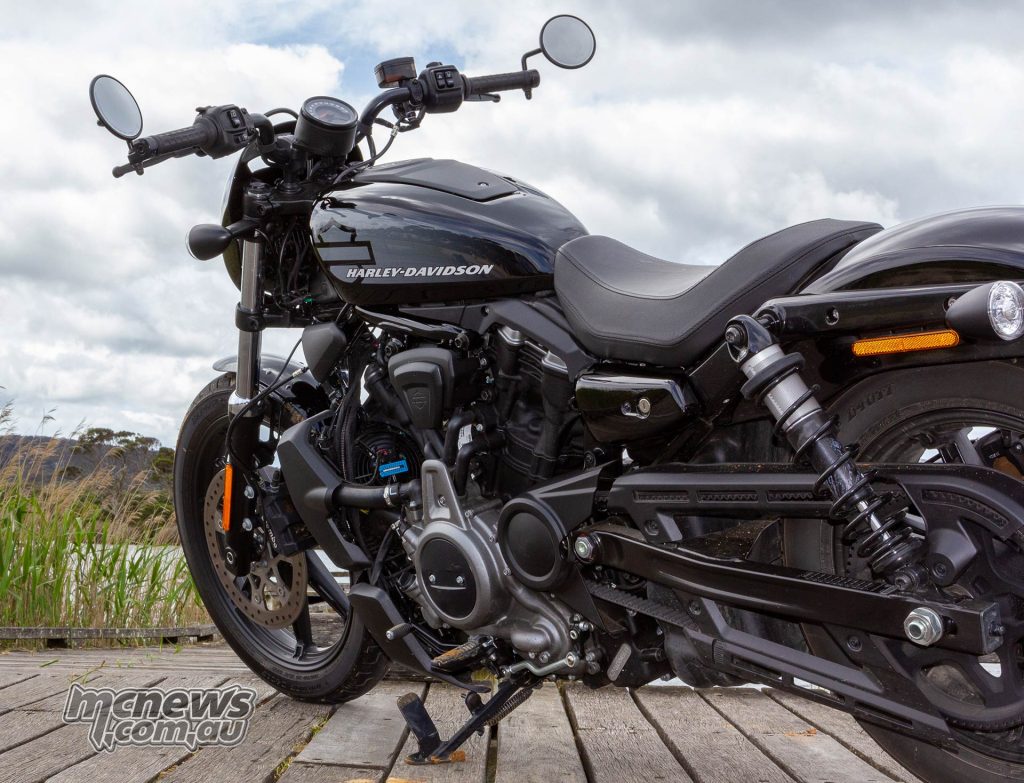
You can’t make a super smooth ride with such short travel. Physics doesn’t bend to aesthetics. So our ordinary road surfaces tend to be transferred through a fair bit rather than absorbed. There is only so much you can do with limited travel.
The brakes are also only a slight improvement on the Sportster which I had real concerns over in terms of outright stopping power. While these are slightly better, I maintain that having only a single disc on a bike carrying 220 kilos is a bit bonkers. I’d much rather have better brakes than a pretty wheel from one side… Still a fail there I’m afraid.
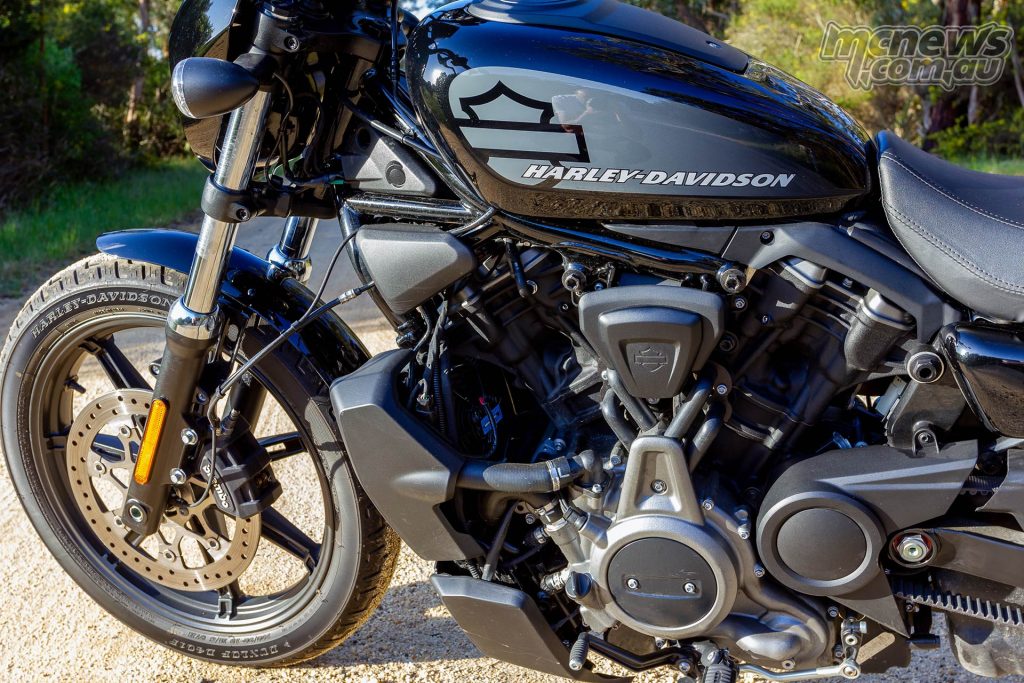
Other thoughts? Well the fuel tank holds 11 and a bit litres. Allowing a couple of litres for reserve that’s going to give you around 9 litres of usable fuel. That’s not going to get you near 200 kms from a tank. Which is not exactly a lot. In fact that’s not even a full day’s commute for me.
Now some of that may sound overly negative. It probably is. But we’re talking about a Harley Davidson here. Not a new, emerging player finding their feet. Truth be told I probably have higher expectations. And at 24 grand I think it’s fair to assume that potential punters probably will have as well… They might look at that fairly rudimentary box square section swingarm for instance and wonder if that’s what they expected 24 big ones to get them. I know it caught my eye.
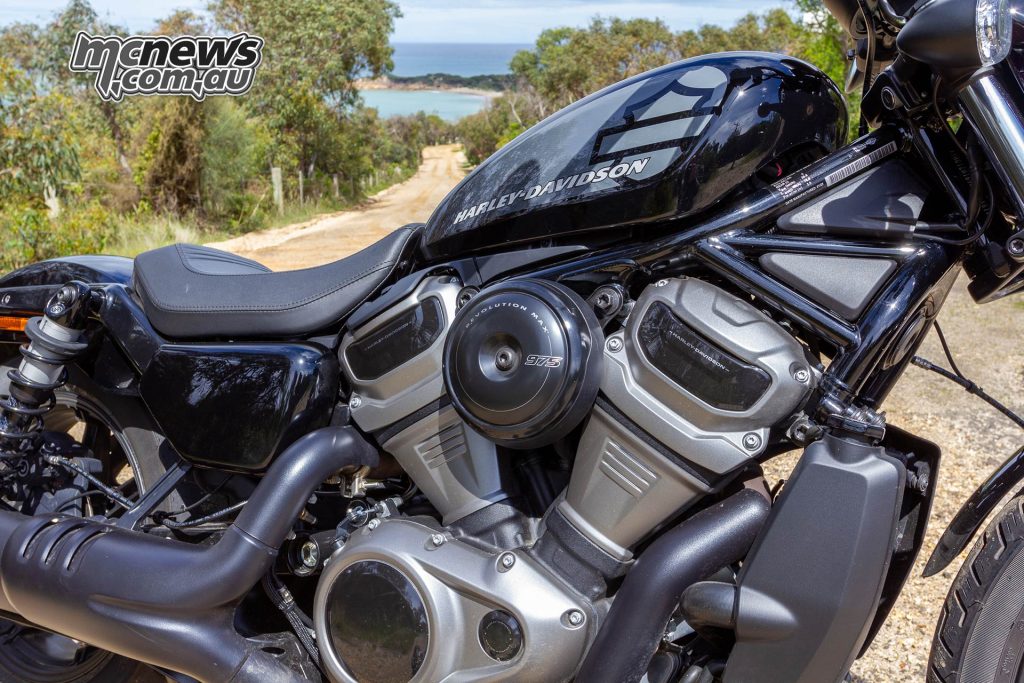
Aesthetically it’s a bit hit and miss for me. Some nice elements and then some that look like afterthoughts or compromises. That swingarm, the whole radiator setup, being able to see exploded wires under the fake tank, a number of elements on the left hand side of the engine. It’s definitely made to be looked at and photographed from the right hand side…
Final word. It’s another interesting option in the Harley lineup. It’s not perfect but will sell. The Nightster will find some fans. Time will tell if it strikes a chord with new customers to the brand or folks that were already pretty much decided in their brand choice.
Check out the Harley-Davidson Australia website (link) for more info.
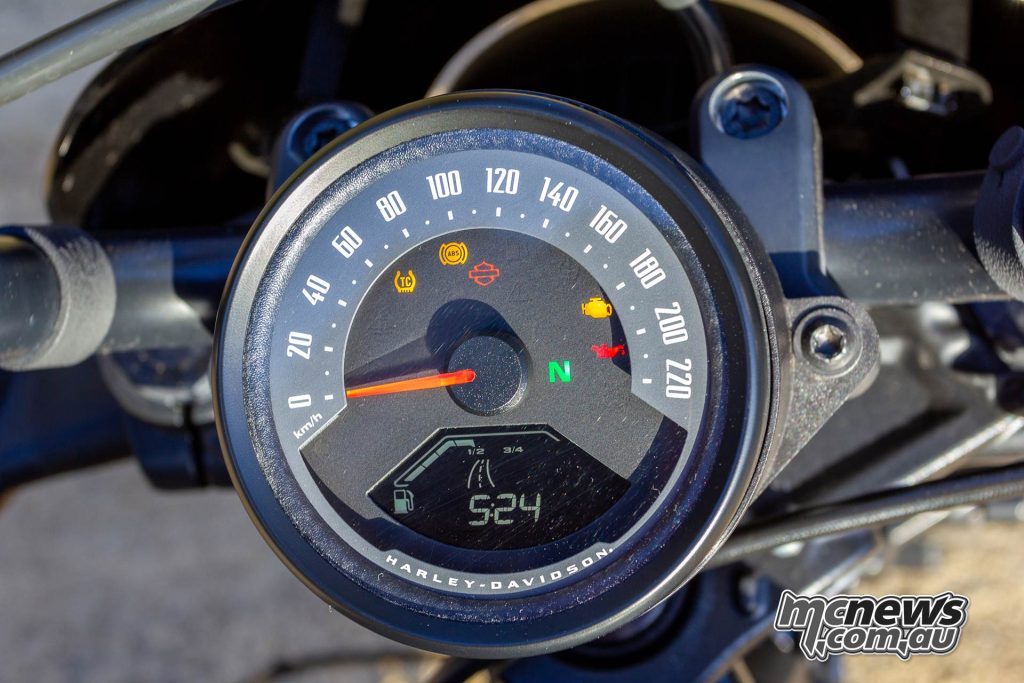
I like the Harley Nightster because
- The engine delivery is genuinely smooth and revs out nicely
- Handling and ride are a noticeable step up from the Sportster S
- Easier to ride overall too
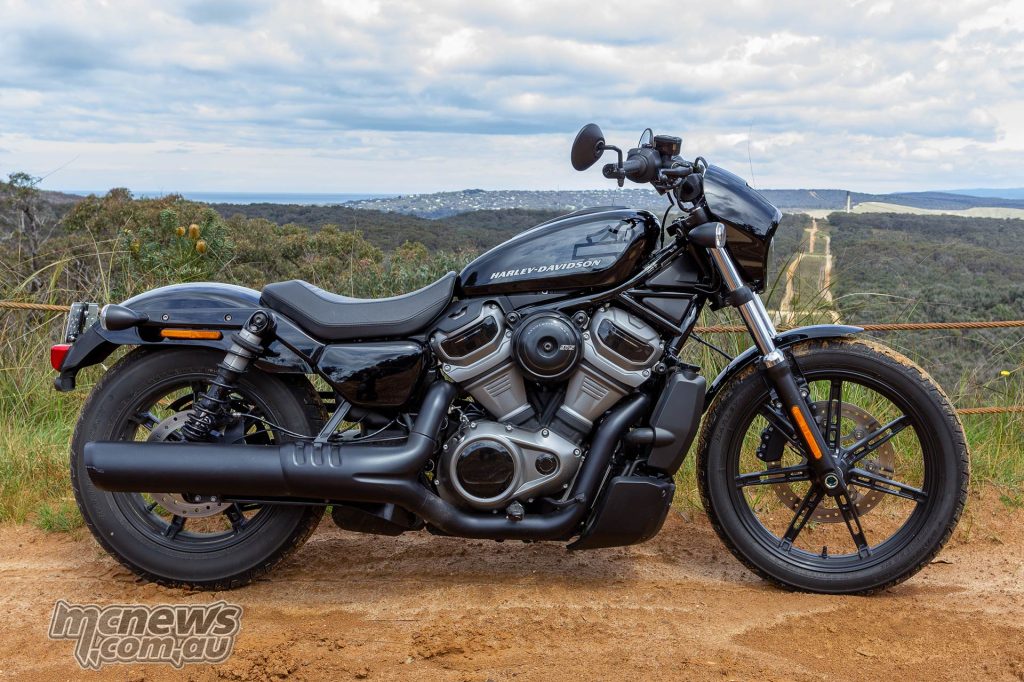
I’d like the Harley Nightster more if:
- Can we get a second disc on the front please
- Sports mode fuelling is a little toey for my liking, moreso at low speeds
- That exhaust note is not the most inspiring
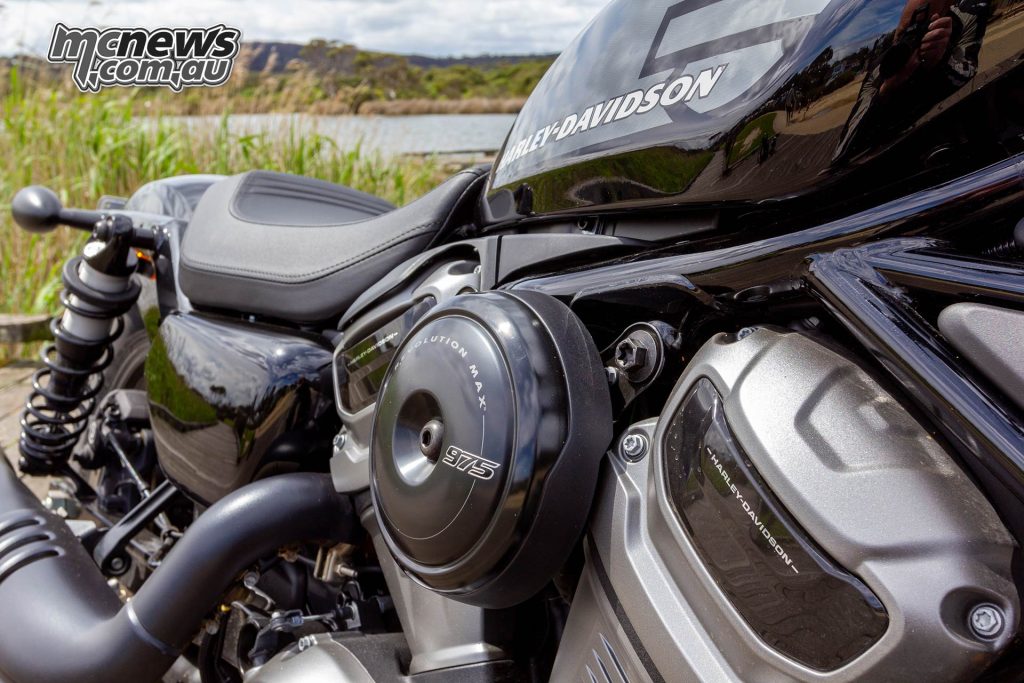
Harley-Davidson Nightster Specifications
- Engine – Revolution Max 975T, 975 cc, V-Twin,
- Valves – Chain-driven, DOHC, hydraulic self-adjusting lifters, intake VVT; four valves per cylinder
- Bore x Stroke – 97 x 66 mm (3.82″ x 2.6″)
- Compression Ratio – 12:1
- Power – 90 hp (67 kW) at 7500 rpm
- Torque – 95 Nm (70 ft-lb) at 5000 rpm
- Induction – Electronic Sequential Port Fuel Injection (ESPFI)
- Intake – Downdraft intake, tuned velocity stacks, washable filter media
- Exhaust – 2-into-1; catalyst in header
- Lubrication – Semi-Dry Sump, 4.5 litre oil capacity
- Primary Drive – Gear, 49/89 ratio
- Final Drive – Belt, 80/34 ratio
- Transmission – Six-speed
- Clutch – Mechanical, 8 plate wet, assist & slip, 1090N
- Front Suspension – 41mm Showa Dual Bending Valve conventional forks
- Rear Suspension – Dual outboard, direct-acting (no linkage) emulsion technology shock absorbers with coil springs and a threaded collar for pre-load adjustment.
- Lean angle – 32 degrees
- Front Brake – Axially mounted four-piston fixed front caliper, 320 mm rotor, ABS
- Rear Brake – single piston floating caliper, 260 mm, ABS
- L x W x H – 2206 x 836 x 1108 mm
- Seat Height – 705 mm
- Rake – 30 degrees
- Fork angle – 28 degree
- Trail – 137 mm
- Wheelbase – 1556 mm
- Tyres – 100/90-19 (F), 150/80-16 (R)
- Frame – Stressed-member, high strength low alloy steel trellis frame; stamped, cast, and forged junctions; MIG welded; aluminum forged midstructure
- Swingarm – Mild steel, rectangular tube section, stamped xmember; MIG welded
- Fuel Capacity – 11.7 litres
- Weight – 218 kg wet
- Gross weight rating – 418 kg
- Warranty – 24 months
- RRP – From $23,995







